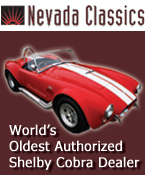I'm somewhat picky about the colours I use for my builds. I try to use the factory codes as often as possible, but I am not so anal as to need to reduce the size of the metal flake to the proper scale size (yet).

I have a collection of automotive paint in my basement, but I also use a couple of other sources, especially when I don't want to buy a whole pint from my PPG guy.
The two colours that are on a large number of Cobras are 1964 Ford Guardsman Blue

and 1963 Ford Viking Blue

There are LOTS of other colours that Cobras were originally painted, but those seem the be the traditional colours.
The original lacquer was nitrocellulose and polished out very well. It is almost impossible to find now (the last time I used it I got it from a place in CT), and probably very expensive if you do. Any lacquer that you buy today will most likely be acrylic. It does not polish as well as nitrocellulose, but will still look good.
All of these sources use lacquer paints, or a paint that is thinned by lacquer thinner. Some states have outlawed lacquer (I have to go to NH to buy paint), and a lot of paint shops have stopped carrying the stuff. If you decide to buy paint from any of these places I strongly suggest finding yourself some PPG brand DTL-876 medium speed thinner and some Plastikote primer (I use T237 sandable white).
You need real auto primer because lacquers can eat bare plastic (this is called crazing) and some softer primers as well. High speed lacquer thinners will significantly reduce the chance of crazing, but because lacquer dries by evaporation the high speed thinner might dry before it hits the object being painted. This may result in a 'fuzzy' look, or even cobwebby looking stuff coming out of your sprayer. I will often add some medium speed thinner (the DTL-876) to slow down the drying process a bit. This does increase the chance of crazing, but if object being painted is properly protected there should be no problems, and the paint should go on nice and smooth. The pics above were shot this way and have no polishing or clearcoat.
Some paints are sold as basecoat/clearcoat - this usually means that the colour coat will have a dull finish, and you need to cover it with a clear coat to get it to gloss up. Other paints are single stage (the paint in the pics above is not clear coated or polished), and can be polished up after painting. You can shoot clear on top of a single stage paint (and I usually do). I usually use about 1-2 ounces of paint for a model.Some of the newer paints are 3 stage and use a base colour coat, then a tint coat, and then a clear coat. These paints tend to be on the more exotic cars like the Lamborghinis, though Chrysler has used some as well for some of their pearl colours.
Sources:
http://www.mcwautomotivefinishes.com/ - MCW has a huge selection for just about everything imaginable prior to 1970. The come pre-thinned and ready to airbrush. MCW paints might need a good shot of medium speed thinner. He also has a large selection of race car paint; his NASCAR paints match pretty well, but some of his other ones (like Aston green) are not quite right. The owner, Dave Dodge, is a good guy, and can also do custom mixes. MCW does not ship outside of the US.
http://www.hiroboy.com/catalog/index.php?cPath=48 - Hiroboy is based in England and can ship paint to many international locations. He does not have the same colour selection as MCW, but he does have Viking and Guardsman blues - look in the Zero Paints section. He can also do custom orders. His paint may need just a splash of thinner - he seems to mix them a bit thick. The owner is Steve Hemming.
http://www.paintscratch.com/ - Paint is available in various sizes, but is not cheap, and is not pre-thinned. Many newer colours are available. They also have colour lists per year with a representative shade for many of them.
http://www.tcpglobal.com/autocolorlibrary/ - Only larger quantities available, but they do a really good job matching colours. I have used them to supply paint for full sized cars as well as supplying some of the colours that I use all the time. They also have scans of a lot of paint chips going back many years. The scans are not of the highest quality, but they work well enough.
Steve


